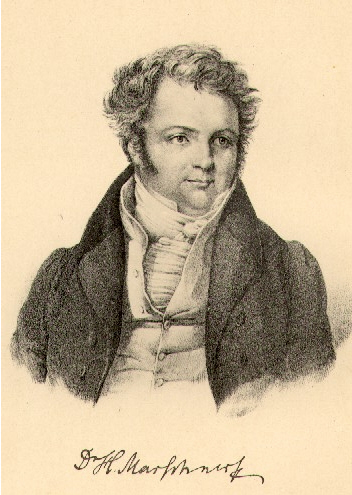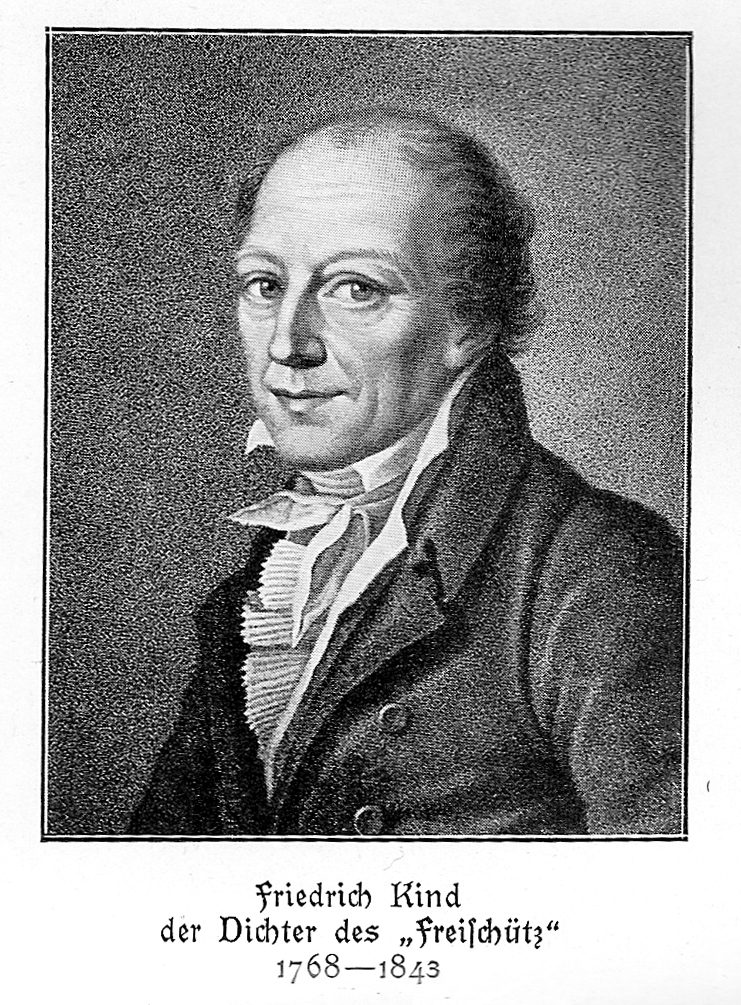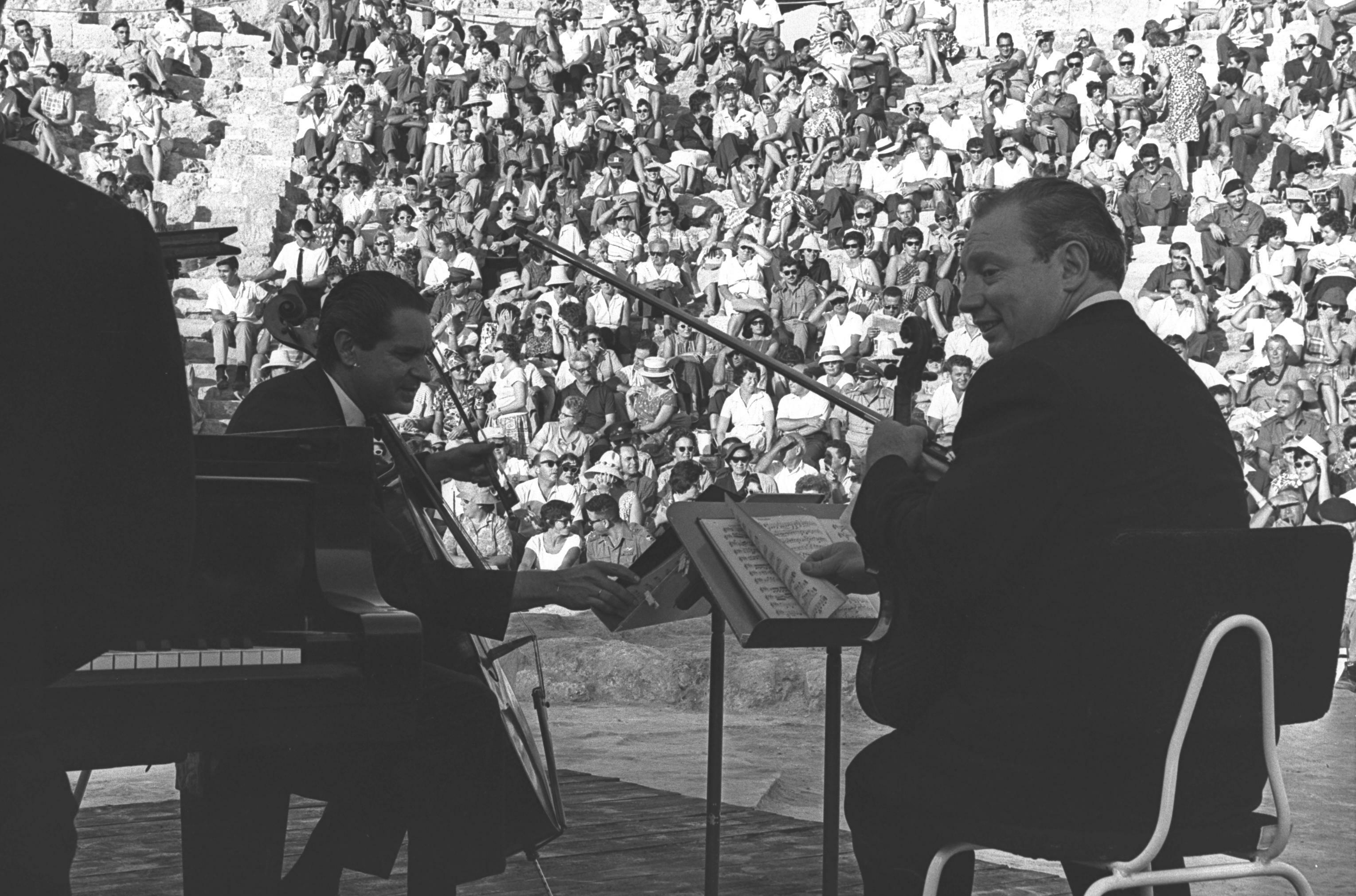|
Marschner
Heinrich August Marschner (16 August 1795 – 14 December 1861) was the most important composer of German opera between Carl Maria von Weber, Weber and Richard Wagner, Wagner."Marschner's ''Hans Heiling'' From Vienna" WQXR-FM, WQXR, 26 November 2015 Biography Marschner was born in Zittau and was originally intended for a legal career. After a meeting with Beethoven around 1815–16, he decided to devote himself to music and became a private music teacher in Bratislava. From 1821 he worked as a stage composer and conductor at the municipal theatres in Dresden (from 1821), Leipzig (from 1827), and the Court Theatre at Hanover (from 1830), where the opera ''Hans Heiling'' (1833) established his name among the leading German opera composers of the time. He died in Hanover.
|
Der Vampyr
'' Der Vampyr '' (''The Vampire'') is a Romantic opera in two acts by Heinrich Marschner. The German libretto by Wilhelm August Wohlbrück (Marschner's brother-in-law) is based on the play ''Der Vampir oder die Totenbraut'' (1821) by Heinrich Ludwig Ritter, which itself was based on the short story ''The Vampyre'' (1819) by John Polidori. The first performance took place on 29 March 1828 in Leipzig, where it was a hit. The opera is still occasionally performed, and, in 1992, an updated adaptation, entitled '' The Vampyr: A Soap Opera'', with new lyrics by Charles Hart, starring Omar Ebrahim and produced by Janet Street-Porter, was serialised on BBC television. In June 2014, OperaHub in Boston premiered a new English-language adaptation of ''Der Vampyr'' by John J King that spoofs more modern vampire stories such as ''Twilight'', ''Dracula'', the ''Vampire Chronicles'', and ''Buffy the Vampire Slayer''. Roles Synopsis :Place: Scotland :Time: the eighteenth century. Act 1 ' ... [...More Info...] [...Related Items...] OR: [Wikipedia] [Google] [Baidu] |
Hans Heiling
''Hans Heiling'' is a German Romantic opera in 3 acts with prologue by Heinrich Marschner with a libretto by Eduard Devrient, who also sang the title role at the première at the Königliche Hofoper (now Berlin State Opera), Berlin, on 24 May 1833. From there, the work went on to become Marschner's most successful opera. The opera brought the composer a considerable reputation, although this did not materially affect his position in Hanover, where he was music director of the Court Theatre. Like Marschner's other great success, ''Der Vampyr'', the plot of ''Hans Heiling'' makes great use of supernatural elements. As with several of his operas, ''Hans Heiling'' is based on a folk legend. Roles Synopsis :Place: Bohemian Erzgebirge mountains :Time: 14th century. Prologue After falling in love with the mortal Anna, Hans Heiling plans to leave the underworld empire of the ''Erdgeister'' to wed her. Ignoring the attempts of his mother the Queen to persuade him to stay, he takes ... [...More Info...] [...Related Items...] OR: [Wikipedia] [Google] [Baidu] |
Der Templer Und Die Jüdin
''Der Templer und die Jüdin '' (English: ''The Templar and the Jewess'') is an opera (designated as a '' Große romantische Oper'') in three acts by Heinrich Marschner. The German libretto by Wilhelm August Wohlbrück was based on a number of intermediate works based in turn on Walter Scott's 1819 novel '' Ivanhoe''. Performance history The first performance took place at the Leipzig Opera on 22 December 1829. It became Marschner's most successful work and was staged more than 200 times in Germany during the next 70 years. A revised version with recitatives rather than spoken dialogue was performed in Berlin on 3 August 1831 with Eduard Devrient as Bois-Guilbert. It was given in London at the Prince's Theatre on 17 June 1840, and in New York on 29 January 1872. Many critics regarded the opera as unnecessarily complicated (and expensive to produce) and simplified versions were prepared by Felix Mottl, Richard Kleinmichel and finally Hans Pfitzner (1912). The latter's version ... [...More Info...] [...Related Items...] OR: [Wikipedia] [Google] [Baidu] |
Carl Maria Von Weber
Carl Maria Friedrich Ernst von Weber (18 or 19 November 17865 June 1826) was a German composer, conductor, virtuoso pianist, guitarist, and critic who was one of the first significant composers of the Romantic era. Best known for his operas, he was a crucial figure in the development of German '' Romantische Oper'' (German Romantic opera). Throughout his youth, his father, , relentlessly moved the family between Hamburg, Salzburg, Freiberg, Augsburg and Vienna. Consequently he studied with many teachers – his father, Johann Peter Heuschkel, Michael Haydn, Giovanni Valesi, Johann Nepomuk Kalcher and Georg Joseph Vogler – under whose supervision he composed four operas, none of which survive complete. He had a modest output of non-operatic music, which includes two symphonies; a viola concerto; bassoon concerti; piano pieces such as Konzertstück in F minor and '' Invitation to the Dance''; and many pieces that featured the clarinet, usually written for the virtuoso clar ... [...More Info...] [...Related Items...] OR: [Wikipedia] [Google] [Baidu] |
Piano Quartet
A piano quartet is a chamber music composition for piano and three other instruments, or a musical ensemble comprising such instruments. Those other instruments are usually a string trio consisting of a violin, viola and cello. Piano quartets for that standard lineup were written by Wolfgang Amadeus Mozart, Robert Schumann, Ludwig van Beethoven, Johannes Brahms, Antonín Dvořák and Gabriel Fauré among others. In the 20th century, composers have also written for more varied groups, with Anton Webern's ''Quartet'', opus 22 (1930), for example, being for piano, violin, clarinet and tenor saxophone, and Paul Hindemith's quartet (1938) as well as Olivier Messiaen's '' Quatuor pour la fin du temps'' ( 1940) both for piano, violin, cello and clarinet. An early example of this can be found in Franz Berwald's quartet for piano, horn, clarinet and bassoon ( 1819), his opus 1. A rare form of piano quartets consist of two pianos with two players at each piano. This type of ensemble is in ... [...More Info...] [...Related Items...] OR: [Wikipedia] [Google] [Baidu] |
Zittau
Zittau ( hsb, Žitawa, dsb, Žytawa, pl, Żytawa, cs, Žitava, Upper Lusatian Dialect: ''Sitte''; from Slavic "'' rye''" (Upper Sorbian and Czech: ''žito'', Lower Sorbian: ''žyto'', Polish: ''żyto'')) is the southeasternmost city in the German state of Saxony, and is located in the district of Görlitz, Germany's easternmost district. It has a population of around 25,000, and is one of the most important cities in the region of Lusatia (Upper Lusatia). The inner city of Zittau still shows its original beauty with many houses from several architectural periods: the famous town hall built in an Italian style, the church of St John and the stables (''Salzhaus'') with its medieval heritage. This multi-storied building is one of the oldest of its kind in Germany. Geography Zittau sits on the Mandau River, while the Lusatian Neisse, which forms the border with Poland, touches the city in the east. The confluence of both rivers is located in the southeast of the city. Further ... [...More Info...] [...Related Items...] OR: [Wikipedia] [Google] [Baidu] |
Beethoven
Ludwig van Beethoven (baptised 17 December 177026 March 1827) was a German composer and pianist. Beethoven remains one of the most admired composers in the history of Western music; his works rank amongst the most performed of the classical music repertoire and span the transition from the Classical period to the Romantic era in classical music. His career has conventionally been divided into early, middle, and late periods. His early period, during which he forged his craft, is typically considered to have lasted until 1802. From 1802 to around 1812, his middle period showed an individual development from the styles of Joseph Haydn and Wolfgang Amadeus Mozart, and is sometimes characterized as heroic. During this time, he began to grow increasingly deaf. In his late period, from 1812 to 1827, he extended his innovations in musical form and expression. Beethoven was born in Bonn. His musical talent was obvious at an early age. He was initially harshly and intensively t ... [...More Info...] [...Related Items...] OR: [Wikipedia] [Google] [Baidu] |
Johann Friedrich Kind
Johann Friedrich Kind (4 March 1768, in Leipzig – 24 June 1843 in Dresden) was a German dramatist, most famous for writing the libretto for Carl Maria von Weber's opera ''Der Freischütz'' (1821). Biography He studied law, and began his law practice in Dresden in 1793. In 1814, he abandoned his law practice to devote himself exclusively to literary work. He was a very industrious writer in many fields of literature, in all of which he was popular in his day with a large class of readers. With Winkler, he edited the ''Abendzeitung'' from 1817 to 1826. Though he published five volumes of sentimental and popular poetry, his poetry is the weakest of his literary efforts; the 1894 edition of the reputed Brockhaus encyclopedia critiqued it as being "smooth in form but without the least bit of originality."Brockhaus' Konversations-Lexikon. 14th ed., Leipzig, Berlin and Vienna 1894; Vol. 10, p. 339. His popular tales have somewhat more merit than his poems; but it is in the line of ope ... [...More Info...] [...Related Items...] OR: [Wikipedia] [Google] [Baidu] |
Ludwig Van Beethoven
Ludwig van Beethoven (baptised 17 December 177026 March 1827) was a German composer and pianist. Beethoven remains one of the most admired composers in the history of Western music; his works rank amongst the most performed of the classical music repertoire and span the transition from the Classical period to the Romantic era in classical music. His career has conventionally been divided into early, middle, and late periods. His early period, during which he forged his craft, is typically considered to have lasted until 1802. From 1802 to around 1812, his middle period showed an individual development from the styles of Joseph Haydn and Wolfgang Amadeus Mozart, and is sometimes characterized as heroic. During this time, he began to grow increasingly deaf. In his late period, from 1812 to 1827, he extended his innovations in musical form and expression. Beethoven was born in Bonn. His musical talent was obvious at an early age. He was initially harshly and intensively t ... [...More Info...] [...Related Items...] OR: [Wikipedia] [Google] [Baidu] |
Reclam
Reclam Verlag is a German publishing house, established in Leipzig in 1828 by Anton Philipp Reclam (1807–1896).Reclam-Museum öffnet in Leipzig in (23.10.2018). Retrieved 28 October 2018 It is particularly well known for the "little yellow books" of its ''Universal-Bibliothek'' ("universal library"), simple paperback editions of literary classics for schools and universities. History In 1802 Charles Henri Reclam (1776–1844), whose family originated from , had moved to Leipzig ...[...More Info...] [...Related Items...] OR: [Wikipedia] [Google] [Baidu] |
GNU Free Documentation License
The GNU Free Documentation License (GNU FDL or simply GFDL) is a copyleft license for free documentation, designed by the Free Software Foundation (FSF) for the GNU Project. It is similar to the GNU General Public License, giving readers the rights to copy, redistribute, and modify (except for "invariant sections") a work and requires all copies and derivatives to be available under the same license. Copies may also be sold commercially, but, if produced in larger quantities (greater than 100), the original document or source code must be made available to the work's recipient. The GFDL was designed for manuals, textbooks, other reference and instructional materials, and documentation which often accompanies GNU software. However, it can be used for any text-based work, regardless of subject matter. For example, the free online encyclopedia Wikipedia uses the GFDL (coupled with the Creative Commons Attribution Share-Alike License) for much of its text, excluding text that was i ... [...More Info...] [...Related Items...] OR: [Wikipedia] [Google] [Baidu] |
Piano Trio
A piano trio is a group of piano and two other instruments, usually a violin and a cello, or a piece of music written for such a group. It is one of the most common forms found in classical chamber music. The term can also refer to a group of musicians who regularly play this repertoire together; for a number of well-known piano trios, see below. The term "piano trio" is also used for jazz trios, where it most commonly designates a pianist accompanied by bass and drums, though guitar or saxophone may figure as well. Form Works titled "Piano Trio" tend to be in the same overall shape as a sonata. Initially this was in the three movement form, though some of Haydn's have two movements. Mozart, in five late works, is generally credited with transforming the accompanied keyboard sonata, in which the essentially optional cello doubles the bass of the keyboard left hand, into the balanced trio which has since been a central form of chamber music. With the early 19th century, part ... [...More Info...] [...Related Items...] OR: [Wikipedia] [Google] [Baidu] |







